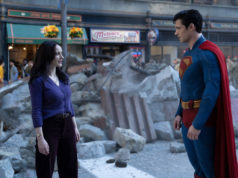Paine is a dot-com entrepreneur who got on board the electric bandwagon when the cars started coming out, and his movie has all the fervor of a religious convert telling the story of a martyr. He doesn’t put his film together with the fluency of Michael Moore (Fahrenheit 9/11) or Morgan Spurlock (Super Size Me), but he argues his case well enough. In 1996, General Motors introduced its EV-1, a zero-emissions car that ran entirely on electricity. It was available only in California and Arizona, but the likes of Tom Hanks and Mel Gibson (who shows up here as an interview subject) came away raving about the driving experience. Competing automakers all put out their own electric models, and gas engines seemed to be on the way out. Yet within eight years, electric cars had entirely disappeared.
Paine and his interview subjects (a long list of former Ford and GM employees, chief among them Chelsea Sexton, the surprisingly young executive in charge of developing the EV-1) occasionally oversell the electric models’ benefits. The limited battery technology that gave those cars only a 60- to 70-mile range receives just a glancing mention. Still, it’s stomach-turning to see how so many special interests lined up to thwart progress. Some of the villains are familiar: the oil companies, the White House, the California Air Resources Board. Others are less so, like the hydrogen fuel cell lobby, which has been heavily touted as a solution to the energy crisis by President Bush and Gov. Schwarzenegger. The movie exposes fuel cells as a boondoggle — their own advocates admit hydro cars won’t be on the road for at least another two decades.
The automakers themselves come off as the most culpable, investing in the electrics but never dreaming that they would actually work. When that happened, the automakers panicked, fearing that these low-maintenance cars would hurt their lucrative repair businesses. Because the EV-1s and their electric brethren had all been leased and not sold, the companies were able to forcibly take the cars back from the drivers who had them, the sort of product recall generally reserved for New Coke-like fiascos. Paine’s camera follows the mothballed cars to a junkyard, where these shiny, new, perfectly working automobiles are put into a crusher. You don’t have to be a tree-hugger to see something deeply wrong with this.
The film arrives too late to tell you that just last week, the automotive press was set buzzing when California-based Tesla Motors unveiled its Roadster, a two-seat sports car that runs on lithium-ion batteries like the one in your iPod. The Roadster, which will be on the streets within a year, can achieve speeds of 130 mph and go 250 miles without recharging, a far greater range than the lead-acid battery-powered EV-1s offered. The electric car may live again, and it seems the Big Three automakers will miss out. The lesson is clear: Whether dealing in cars or movies, any business environment that crushes innovation in favor of protecting the status quo will get what it deserves.
Who Killed the Electric Car?
Written and directed by Chris Paine. Rated PG-13.











